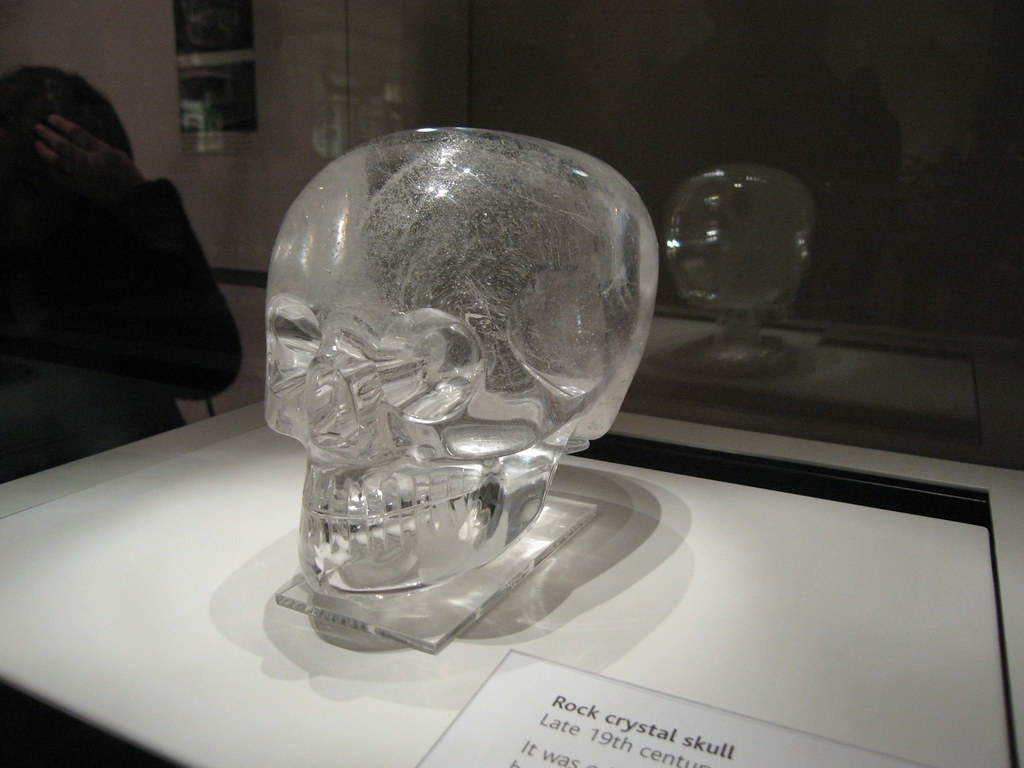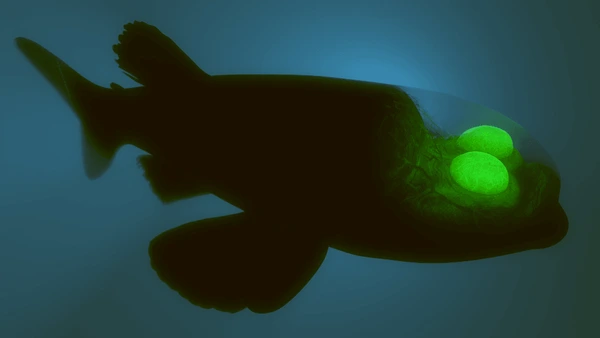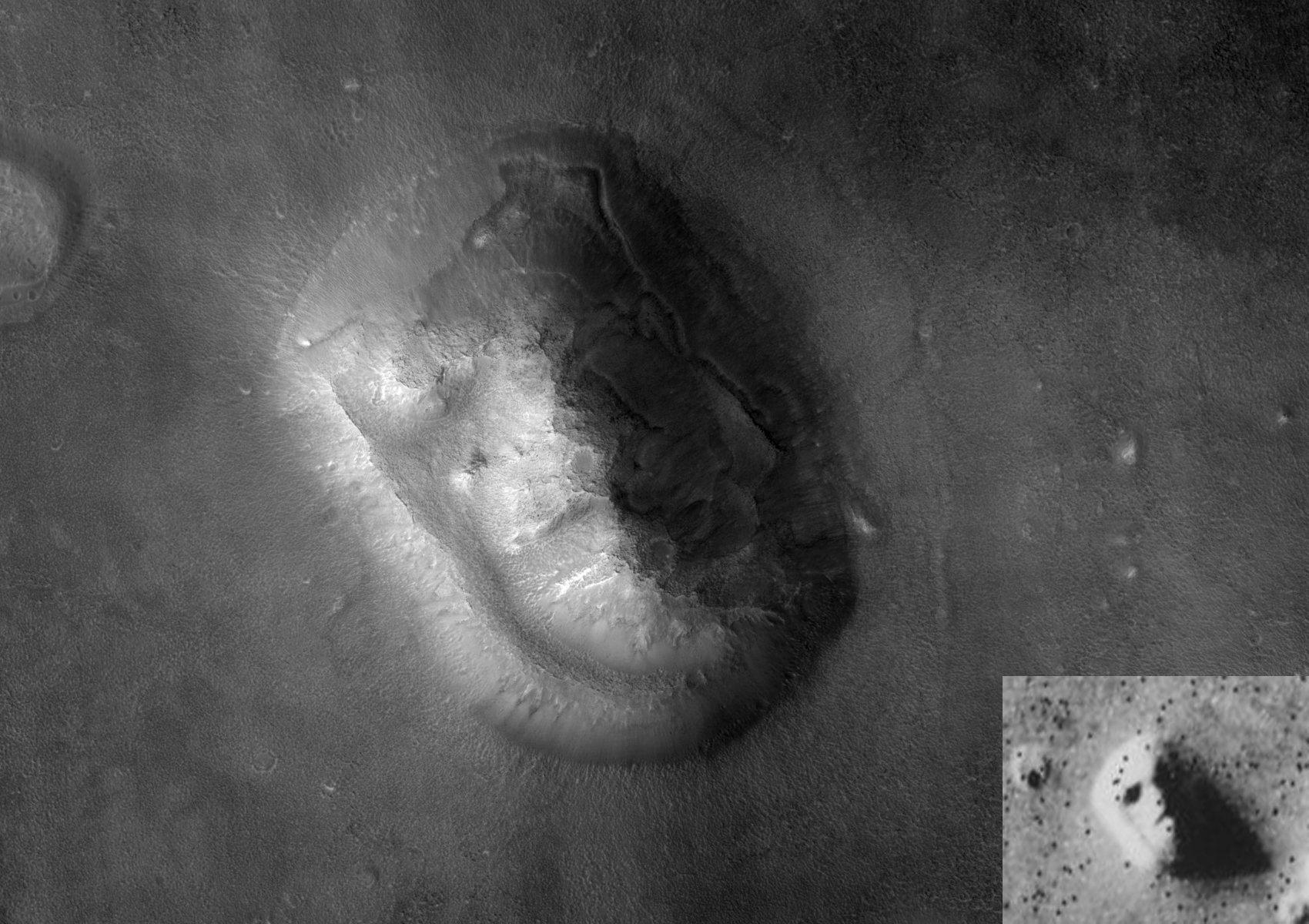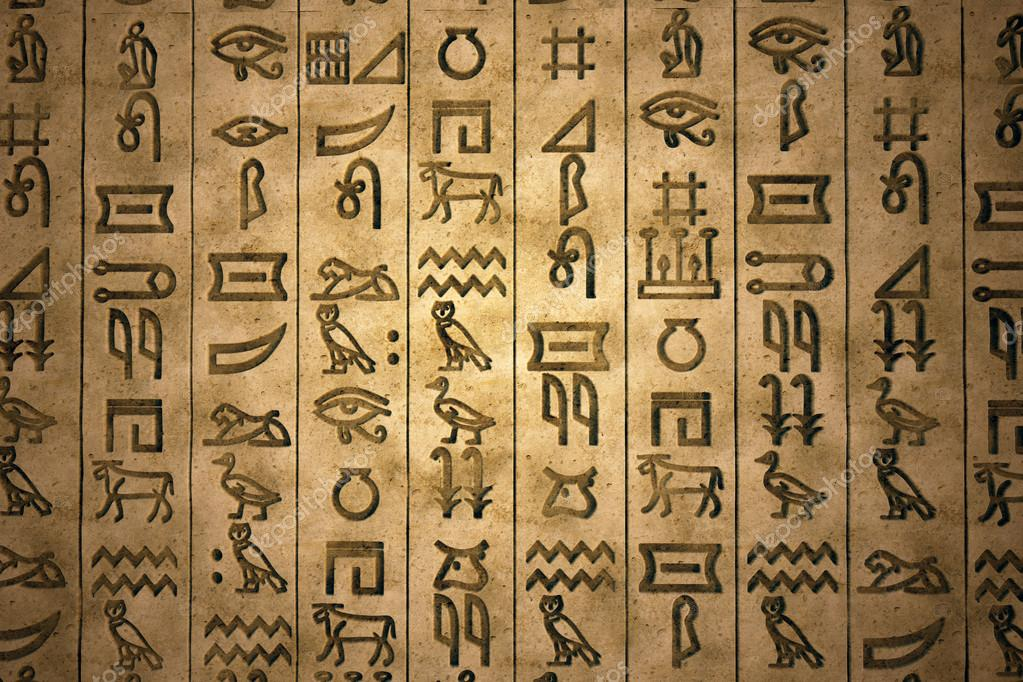For years, humanity has been baffled by the world’s ten greatest unsolved mysteries. With the advancement of modern science, some of these mysteries, like the Crystal Skulls and the Face on Mars, have begun to be unraveled. However, there are still mysteries waiting to be solved by future generations.
1. The Mystery of the Crystal Skulls

Many people’s knowledge of crystal skulls comes from the movie “Indiana Jones and the Kingdom of the Crystal Skull,” where they are portrayed as the skulls of mysterious extraterrestrials who created ancient human civilizations. While archaeologists cannot confirm the extraterrestrial origin of these skulls in reality, the 13 mysterious crystal skulls have indeed puzzled people, appearing mostly in Central America, such as Honduras and Mexico, and linked to the enigmatic Mayan civilization and pyramids.
The skulls are made from high-purity transparent crystals, with no apparent tool marks, and their construction does not consider the natural axis of the crystal, which is difficult to achieve even with modern technology. When a laser is shone into the nasal cavity of a crystal skull, it emits light, revealing the skull’s prismatic effect.
In 2008, a research team composed of British and American scientists used electron microscopy and X-ray crystallography to analyze the crystal skulls housed in the British Museum and the Smithsonian Museum. Detailed analysis showed minute rotary marks near the eye sockets, teeth, and skullcap, clearly indicating a cutting and polishing technique from a device called a “rotary wheel,” which the ancient Mayans did not possess. Researchers concluded that these crystal skulls were manufactured in Europe using Brazilian colorless crystal. They might have been sold to collectors as mysterious artifacts of the ancient Mayan civilization, leading many museums to remove them from display, questioning their archaeological value.
Interesting Fact: The 13 mysterious crystal skulls are scattered around the world, with the most famous being the “Skull of Doom.” In 1924, this skull was owned by Anna Mitchell-Hedges, who inherited it from her adoptive father, British explorer and writer F.A. Mitchell-Hedges. According to Anna, the skull’s history dates back 3,600 years, and its eyes could emit blue light, causing computer hard drives to “crash” when placed nearby. This skull has never been subjected to any experimental testing because the current owner does not permit it.
2. The Mystery of Shark Parthenogenesis

In 2001, a female zebra shark at Henry Doorly Zoo in Nebraska, USA, gave birth to pups despite living with three other female sharks for three years without any male interaction. Scientists were perplexed by this phenomenon.
Some scientists proposed that the female shark could store sperm from previous mates for fertilization, while others suggested that sharks might reproduce through rare parthenogenesis (without sperm). In 2007, through DNA testing, scientists revealed the mystery: the pup had no father, making it the first documented case of parthenogenesis in a shark.
Interesting Fact: In 2008, a second case of shark parthenogenesis was confirmed at the Virginia Aquarium & Marine Science Center. A 5-foot-long, 94-pound Atlantic blacktip shark died from unknown complications, and during dissection, aquarium staff were surprised to find a 10-inch-long pup inside. DNA testing showed that the embryo did not carry any genetic material from a male shark.
3. The Unknown Child of the Titanic

Days after the sinking of the Titanic, rescuers found the body of a young boy in the North Atlantic. When he was buried in Nova Scotia, Canada, his identity remained unknown, and his tombstone simply read “Unknown Child.” In 2001, researchers at Lakehead University in Ontario, Canada, approved the exhumation and analysis of the boy’s body. By consulting the passenger list of the Titanic, they narrowed the identity down to one of four children—Gosta Paulson, Eino Panula, Eugene Rice, and Sidney Goodwin. Initially, the body was thought to be that of Eino Panula, but a 2007 test showed this was incorrect. Advanced DNA testing matched the teeth’s DNA with that of Goodwin’s relatives, confirming the unknown child was Sidney Goodwin.
Interesting Fact: The crew members on the rescue ship were deeply saddened by the discovery of the boy’s body and raised money for his tombstone. On May 4, 1912, the boy was buried with a copper pendant engraved with the words “Our Child.”
4. The Transparent Head of the Barreleye Fish

The barreleye fish, living at depths of 2,500 meters, has a peculiar appearance with its tubular eyes that can collect light in the deep sea. Scientists were puzzled by how these eyes function, as they can only see what’s directly in front of them, yet the fish survives in the deep sea environment.
In March of this year, scientists using remotely operated vehicles studied barreleye fish at depths of 600-800 meters and discovered a previously unknown fact: its head is transparent, allowing the eyes to rotate freely. This transparent head structure expands its field of vision, enabling it to see prey above its head. The barreleye fish was first discovered in 1939, but due to fishing methods, these transparent-headed fish were often dead by the time they were noticed.
Interesting Fact: From the pictures, people often mistake the two small holes at the front of its head for eyes, but these are not its eyes. Its eyes are green, round structures located at the front of its head, protected by a fluid-filled transparent material that covers its entire head.
5. The “New England Dark Day”

On May 19, 1780, “New England” and parts of Canada experienced an unusual “dark day.” Due to the limited scientific knowledge of the time, many attributed this phenomenon to religious beliefs. Even today, the “New England Dark Day” is often linked to supernatural events. New England, also known as “New England,” refers to six states in the northeastern corner of the U.S., bordering the Atlantic Ocean and Canada.
Over the centuries, scientists have offered various explanations, including volcanic eruptions or atmospheric disturbances. In 2008, researchers at the University of Missouri, combining historical records and fire-damaged tree rings, concluded that the dark day was caused by severe wildfires in Canada. The fires in the 1780s killed living organisms, burning vast areas of forest and heating tree bark, which later shed, revealing signs of severe fires. The researchers studied the Algonquin Highlands in southern Ontario and found evidence of a major fire at the time, which affected the atmosphere, creating the “New England Dark Day.”
Interesting Fact: According to historical records, the “New England Dark Day” caused people to light candles at midday, birds to sing at night, flowers to close their petals, and animals to behave abnormally.
6. The Acoustic Effects of the Epidaurus Theater

The Epidaurus Theater, built at the end of the 4th century BC near Athens, Greece, is one of the best-preserved ancient theaters. Despite being over two thousand years old, it still boasts excellent acoustics. Actors’ performances can be heard clearly by all 15,000 audience members without amplification. To verify the theater’s acoustic effects, researchers dispersed around the theater to test the strength of sounds from the center, trying to uncover why such professional acoustics were achieved under ancient building conditions. For years, this remained a mystery, with some researchers suggesting that the wind might facilitate sound propagation.
In 2007, the acoustic mystery of the theater was solved. Researchers from Georgia Tech discovered that the limestone used in the theater seats had a filtering effect, suppressing low-frequency sounds and minimizing background noise, making the 15,000 seats act as “sound traps.” However, it’s still unclear how ancient Greeks realized the filtering effect of limestone.
Interesting Fact: The stage of the Epidaurus Theater is a perfect circle with a diameter of 19.5 meters, with a circular base in the center possibly used for an altar dedicated to Dionysus, the Greek god of wine.
7. The “Face on Mars”

The peculiar terrain of the Cydonia region on Mars has fascinated scientists, with some hills resembling a human face, leading to speculation of Martian intelligence. The first space photo of the “Face on Mars” was taken by the Viking 1 spacecraft in 1975. Subsequent photos, including those from 1976, showed different views, leading scientists to believe this might be due to varying sunlight angles. This discovery attracted attention from researchers studying extraterrestrial intelligence, with some suggesting it might confirm a long-lost Martian civilization. However, most scientists maintained that the “Face on Mars” was merely a visual effect.
In 2003, the European Space Agency’s Mars Express spacecraft provided high-resolution stereo imagery and 3D models of the “Face on Mars,” confirming that the human face was an illusion created by sunlight and camera angles. The remaining parts of the hill formed by landslides and earlier remnants did not present a specific face shape.
Interesting Fact: The Cydonia region’s terrain structure has intrigued planetary scientists, located in the transitional zone between the heavily cratered southern highlands and the smoother northern lowlands. Many researchers believe the northern plains might have once been an ancient Martian ocean.
8. The “Universal Checkers Strategy”

Checkers, invented over 400 years ago, is loved by millions. Its complex moves have challenged computers since 1989 when they calculated over 500 million possible moves. In 1992, a computer program barely defeated world champion Marion Tinsley, considered the greatest checkers player of his time. Ultimately, in 2007, a program called “Chinook,” developed by researchers at the University of Alberta, could perform exceptionally in checkers, running on 200 desktop computers to calculate counter-moves for each opponent’s move. If the opponent played perfectly, the program would draw.
Interesting Fact: Checkers is deeply loved by people, and the “Chinook” program developed in 2007 is one of the most complex games ever solved.
9. Deciphering Ancient Clay Tablet Hieroglyphics

A circular clay tablet discovered in Iraq, dating back 2,150 years, was found in the ancient Assyrian capital of Nineveh. It contained Sumerian hieroglyphics depicting the night sky and ancient text. For decades, scientists were unable to interpret the content of this tablet. In 2008, two scientists from the University of Bristol, Alan Bond and Mark Hempsell, successfully translated the hieroglyphics, revealing it to be an astronomer’s star chart from June 29, 3123 BC (Julian calendar).
Interesting Fact: The tablet also revealed another astonishing discovery—the trajectory of the Pisces constellation, showing an asteroid colliding with the Kofels region in Austria. While Kofels is the site of the largest rock slide in the Alps, there is no crater, unlike what the tablet describes. However, the trajectory of the asteroid explains why there’s no crater. The asteroid’s impact angle was very low, only 6 degrees, causing it to collide with a mountain called Gamskogel before reaching its final destination, resulting in an explosion without forming a crater.
10. The Mystery of Bee Flight

The mystery of bee flight is listed first among the top 10 solved scientific mysteries because this research has been highly enlightening, deepening our understanding of bees’ habits. As we grow up, bees are one of the insects we often see, leading us to question how, given their wingspan-to-weight ratio, aerodynamics can support their flight. Past theories could not accurately explain how bees achieve flight.
Finally, in 2005, with the help of high-speed photography and mechanical models of bee wings, scientists could explain the complex mystery of bee flight. Bees flap their wings at a high frequency, up to 230 times per second, faster than smaller insects. Their analysis revealed that the non-traditional short-wave wing flapping is sufficient to keep their bodies aloft.
Interesting Fact: To understand how bees can lift their heavy bodies in flight, researchers forced bees to fly in a small chamber filled with a mix of oxygen and helium. The gas density was lower than regular air, making it difficult for bees to maintain flight at their usual wing beat rate. This required bees to flap their wings faster, allowing scientists to observe the bees’ wings and bodies under pressure, facilitating the observation of their super-slow wing movements.


















